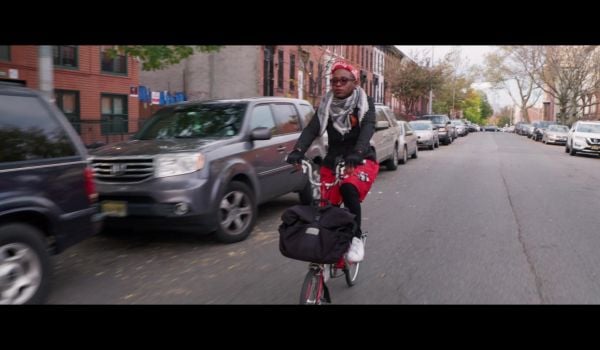We’ve all read the alarming headlines: Driving kills more people in the U.S. than handguns. We’ve also likely witnessed cars weaving in and out of traffic, speeding by us like we’re standing still.
Even more distressing are the statistics. Preliminary data compiled by the National Safety Council show that 42,000 people died in motor vehicle crashes in the U.S. in 2020, an increase of 24% over the previous year. Pedestrian fatality rates, meanwhile, jumped 21% — the highest increase since 1975 – despite the fact that vehicle miles traveled dropped 13% due to the pandemic. According to the National Highway Traffic Safety Administration, a pedestrian is killed every two hours and injured every seven minutes somewhere in the U.S.
To counter this untenable state of affairs, an increasing number of communities nationwide are turning to a Vision Zero strategy, one that aims to eliminate all traffic fatalities and severe injuries while increasing safe, healthy, equitable mobility for all.
While many of the tactics that comprise Vision Zero are well known – from decreasing the legal speed limit to installing traffic calming measures (speed bumps, roundabouts, etc.) to improving roadway lighting and pedestrian crossings – the technological advances and data-driven analytics at the heart of those tactics’ effectiveness are often overlooked.
In the same way that analytics have transformed baseball, data is crucial for measuring the safety improvements that are meant to get us toward Vision Zero. Call it moneyball for traffic safety.
Bellevue, Washington offers a good case in point. After adopting a Vision Zero policy in 2015, city officials measured and analyzed some 4,500 hours of video footage across 40 intersections, taking in more than eight million road users and observing some 20,000 near-misses. The city also gathered transportation data from other sources, including bicycle counts, police incident reports, and resident surveys.
This enabled officials to determine, among other things, that:
-
Cyclists are 10 times more likely to be involved in a traffic conflict than motorists at a number of key intersections;
-
More than 10% of motorists are speeding, half of whom were traveling in excess of 11 mph over the posted speed limit;
-
Motorcycles traveled at higher speeds and generated more critical conflict than any other road user;
-
38% of crash causes can be explained by a combination of road-user volume and conflict data;
-
Cyclists made up 0.1% of observed road users, with motorists accounting for 97.3% and pedestrians 2.6%.
The data-driven analytics at the heart of this study have since been used to identify and prioritize budget and policy proposals in Bellevue related to biking and pedestrian infrastructure, as well as signage and other street improvements. While the project is still in its early stages, the City Council has allocated $2.5 million in the city’s budget for 2021-27 to implement rapid build road safety projects along five high-injury network corridors, including Northeast 8th Street east of downtown and Factoria Boulevard. Funding will be used to implement safety measures, including radar feedback signs, pedestrian crossings, medians, and before/after assessments to help inform future assessments.
Leveraging technological advances and data-driven analytics provides cities nationwide with a sophisticated behavioral understanding of traffic actions and events. This puts them in a significantly better position to quickly address incidents, such as accidents and traffic violations and develop potential solutions that ultimately enhance both traffic flow and road safety.
An analytics approach also better enables cities to prioritize and budget which steps should be taken to move toward Vision Zero goals. Decreasing legal speed limits, for example, is an obvious and inexpensive way to control the speeds of all those who use the road. Unfortunately, data indicates that simply lowering the speed limit also tends to be ineffective, unless accompanied by enforcement — officers, speed cameras, and speed signs which show the posted speed limit and the actual speed of passing vehicles – all of which can be cost-prohibitive. Armed with this kind of data, city officials are in a much better position to justify the use of alternative traffic calming measures, such as permanent installation of speed bumps, roundabouts, medians, and central turn lanes, all designed to “encourage” drivers to slow down.
Similarly, data analytics can demonstrate the efficacy of other measures and justify their expenditure. A recent study in the Netherlands, for example, indicated that a “relatively large proportion” of night-time accidents occurred on unlit road sections. This, coupled with other evidence that pedestrian fatalities are correlated with dark roads, paved the way for installation of bright, broad-spectrum lighting.
Dewey Beach, Delaware provides yet another relevant example. Data derived from a 2019 pedestrian safety audit showed that pedestrian safety accommodations were needed to create a safer environment for both pedestrians and bicyclists in this busy beach community. Among other findings, that data indicated that Delaware had the highest pedestrian fatality rate per capita in the country in 2012-13, including five fatalities along the Route 1 corridor from the Nassau Bridge north of Lewes, DE to the southern limits of Dewey Beach. In the past three years, there were 69 pedestrian or bicycle crashes on Route 1 between Lewes and Fenwick Island, 10 of which were fatal. Delaware State Police, meanwhile, reported 12 crashes involving a motorcycle, moped, or scooter.
This led to installation of bump outs throughout the town limits and seven new rectangular rapid flashing beacons at uncontrolled multi-lane crosswalks. The town also made ADA upgrades for existing, signalized crosswalks and installed the state’s first two-stage, left-turn bicycle boxes, complete with in-pavement bicycle detection loops. The beacons alone have led to an improvement in yielding compliance by as much as 49% (Route 1 @ Wellington Parkway), while limited use of spin alert hazard warning devices has improved driver compliance by 33- 64%.
There is no shortage of ideas when it comes to reducing traffic fatalities, but those ideas stand a better chance of implementation when supported by relevant data analytics. That combination makes it more difficult for both public officials and community leaders to say no when such improvements are introduced. While their resistance may be understandable – attributing largely to concern that traffic-calming devices could mean traffic congestion — a successful complete streets policy that moves a jurisdiction closer to attaining its Vision Zero goals demands the vision to see beyond the current scenario (and the next election) to recognize what the community can truly be.
Wes Guckert, PTP is President & CEO of The Traffic Group, a leading Service Disabled Veteran-Owned Small Business traffic engineering and transportation planning firm serving clients nationally and internationally. He is also a Fellow of ITE and on the National Small Business Leadership Council.




_(1)_600_350_s_c1.png)











